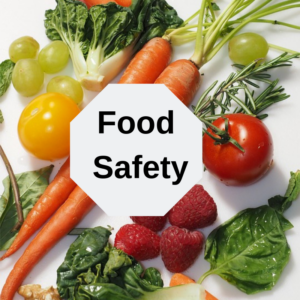Thermometers and Food Safety
go.ncsu.edu/readext?843029
en Español / em Português
El inglés es el idioma de control de esta página. En la medida en que haya algún conflicto entre la traducción al inglés y la traducción, el inglés prevalece.
Al hacer clic en el enlace de traducción se activa un servicio de traducción gratuito para convertir la página al español. Al igual que con cualquier traducción por Internet, la conversión no es sensible al contexto y puede que no traduzca el texto en su significado original. NC State Extension no garantiza la exactitud del texto traducido. Por favor, tenga en cuenta que algunas aplicaciones y/o servicios pueden no funcionar como se espera cuando se traducen.
Português
Inglês é o idioma de controle desta página. Na medida que haja algum conflito entre o texto original em Inglês e a tradução, o Inglês prevalece.
Ao clicar no link de tradução, um serviço gratuito de tradução será ativado para converter a página para o Português. Como em qualquer tradução pela internet, a conversão não é sensivel ao contexto e pode não ocorrer a tradução para o significado orginal. O serviço de Extensão da Carolina do Norte (NC State Extension) não garante a exatidão do texto traduzido. Por favor, observe que algumas funções ou serviços podem não funcionar como esperado após a tradução.
English
English is the controlling language of this page. To the extent there is any conflict between the English text and the translation, English controls.
Clicking on the translation link activates a free translation service to convert the page to Spanish. As with any Internet translation, the conversion is not context-sensitive and may not translate the text to its original meaning. NC State Extension does not guarantee the accuracy of the translated text. Please note that some applications and/or services may not function as expected when translated.
Collapse ▲I learned all my cooking and baking skills and everything about the kitchen from my mother. We share the love of preparing delicious food, reading cookbooks like novels, trying new and different recipes and collecting the latest kitchen tools and gadgets. However, one critical kitchen necessity we did not have was a food thermometer. Actually, growing up I don’t remember anyone, family or friend, that owned a food thermometer. I guess we thought going by cooking times and looking at our food to determine it was done was the correct process. However as the late Maya Angelou so brilliantly said,“do the best you can until you know better, then when you know better, do better”. I now understand the importance of not only owning a food thermometer, but actually incorporating it in my food preparation and storage. I also learned the hard way, as I typically do, appliance thermometers also play a critical role in food safety.
So, the first question to address is why do we need a food thermometer? In short, the answer is to prevent food-borne illness; an illness caused by food. To be considered safe for consumption, food should be cooked to a minimum internal temperature, according to the food type, to reliably destroy harmful microorganisms that could be present in the food. The only way to verify the minimum internal temperature has been reached is to use a food thermometer. In utilizing a food thermometer, you can be assured food has been cooked to a safe internal temperature, and prevent both under and over-cooking.
There are several different types of food thermometers on the market to choose from. It is important to read manufacturers guidelines on how to operate, calibrate and maintain your thermometer for accuracy.
Another important thermometer to incorporate in your kitchen is an appliance thermometer. As I mentioned earlier, this is a lesson I unfortunately learned the hard way. My refrigerator door has a digital screen that displays the refrigerator and freezer temperatures. One of my daily tasks is to press the button to verify the refrigerator temperature is 41° or lower and the freezer temperature is 0° or lower. To make a long story short, after discarding what I thought was a defective product, I soon discovered my refrigerator thermometer was malfunctioning. How did I determine this; a simple, inexpensive refrigerator thermometer. Although the refrigerator was registering a cold 38° , it was actually running a warm 48°. This lesson cost me all the food in my refrigerator; as food stored above 41 for more that 4 hours should be discarded. I learned quickly that equipment can fail; and just because it is still operating doesn’t mean it is operating correctly. A backup thermometer would have alerted me the refrigerator was losing temperature. This was several years ago, and today I have not one, but two thermometers in my refrigerator; and a freezer and oven thermometer too.
Thermometers play a critical role in ensuring our food is stored and prepared safely. Using thermometers to verify food, cooking and storage temperatures can help prevent foodborne illness; and save money by preventing disposal of food due to temperature abuse.
Sources:
USDA Food Safety and Inspection Service




